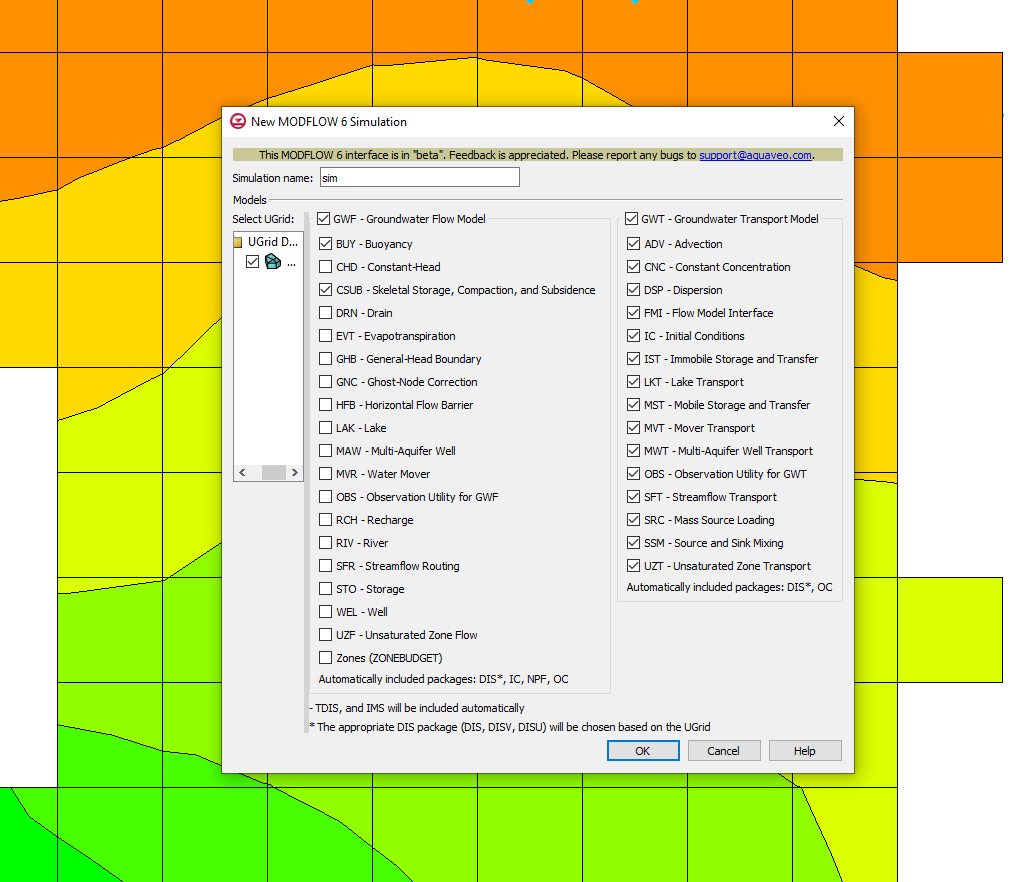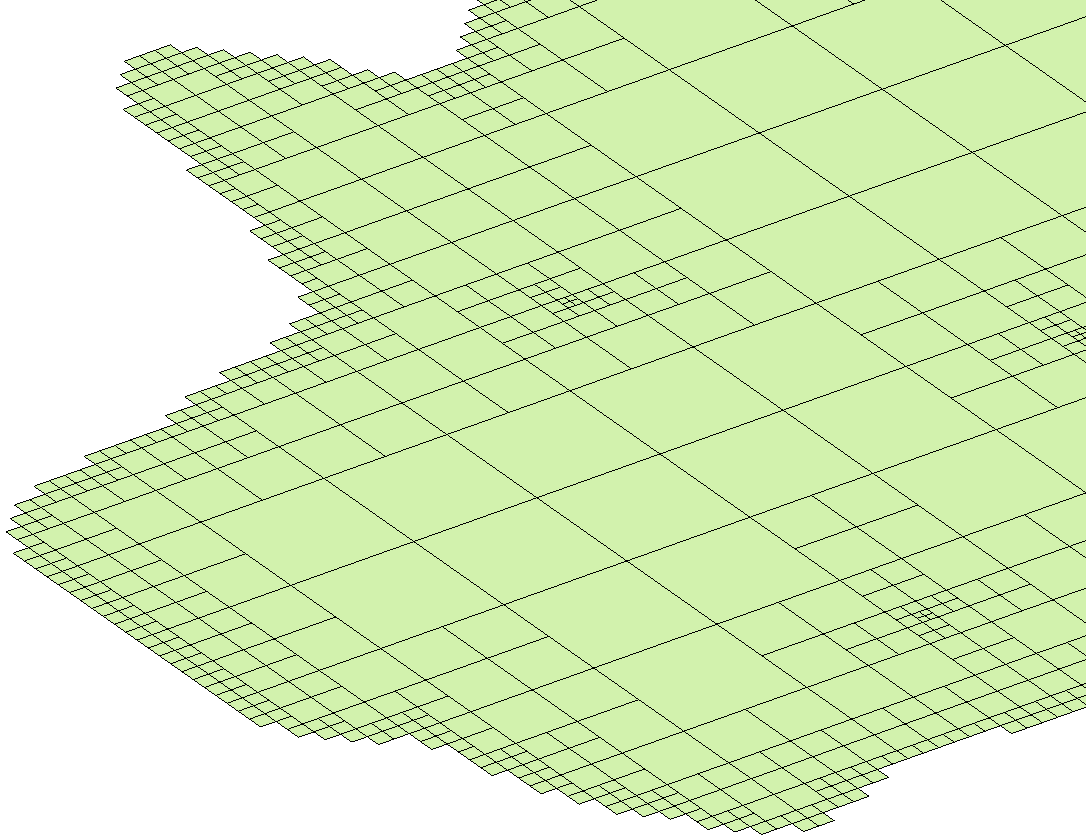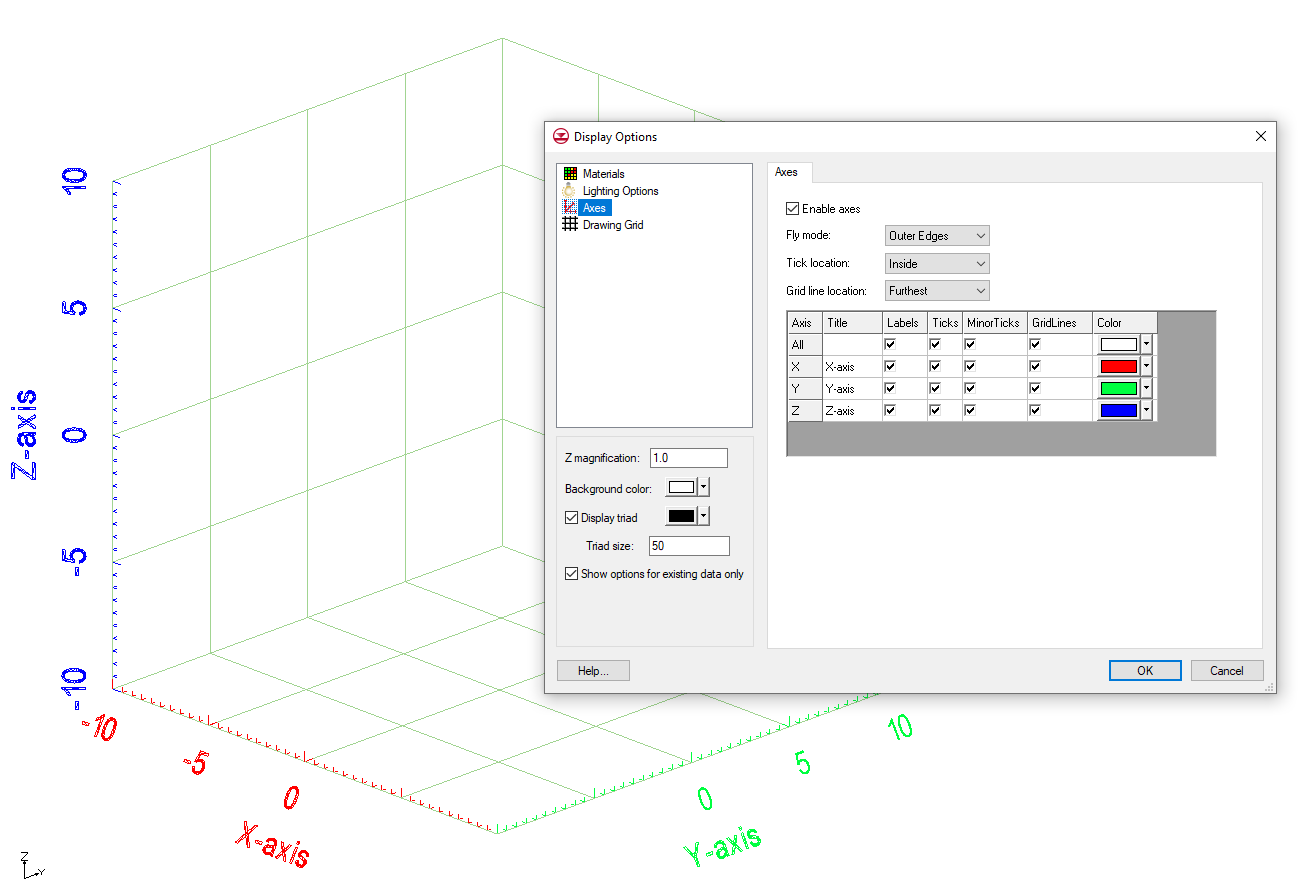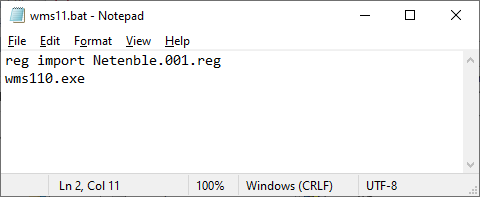New Features in GMS 10.6 Beta
By aquaveo on December 15, 2021Aquaveo is pleased to announce the release of the Groundwater Modeling System version 10.6 in beta! With this beta release, GMS contains changes and improvements to various features, much of it involving increased support for MODFLOW 6 functionality. We’d like to highlight some of the new functionality you can expect to find in GMS 10.6 beta.
Transport Support for MODFLOW 6
GMS 10.6 beta adds the ability to work with transient models for MODFLOW 6, as demonstrated by the addition of transport packages relevant to the GWT (Groundwater Transport Model) package. These will be helpful to many different aspects of groundwater transport modeling, such as dealing with advection, constant concentration, and dispersion. With the wealth of packages this alone adds to GMS 10.6 beta, it will add a lot of functionality to what GMS can do with MODFLOW 6 simulations.

Increased GWF Package Support MODFLOW 6
In addition to the suite of transport-related packages that GMS 10.6 adds to work with, support has also been added for more packages relevant to the GWF (Groundwater Flow Model) package. In this case, this includes the addition of the BUY (Buoyancy) and CSUB (Skeletal Storage, Compaction, and Subsidence) packages. The addition of these packages will help flesh out what GMS 10.6 beta can do with MODFLOW 6 simulations.
Support for Exchanges in MODFLOW 6
Support has also been added in GMS 10.6 for exchanges. These include the GWF-GWF and GWF-GWT exchanges. These can be used to help different models in a GMS project interact, and designate the nature of how they should interact. GWF-GWF exchanges can help two different GWF models interact together and hydraulically connect, telling each model that there is flow along a shared edge. GWF-GWT exchanges can help designate which GWF and GWT models should interact with each other.
These are just a few of the new features and changes coming out as part of the release of GMS 10.6 beta. You can find more information on what will be introduced in GMS 10.6 beta by going to the Aquaveo XMS Wiki. Try out these features and more by downloading GMS 10.6 beta today!









